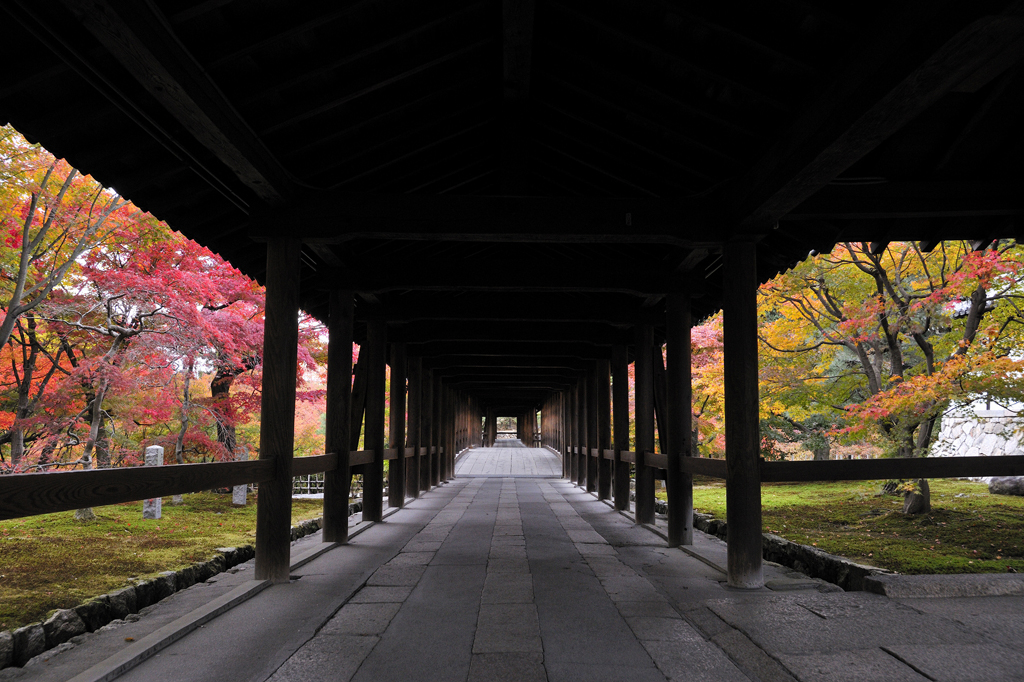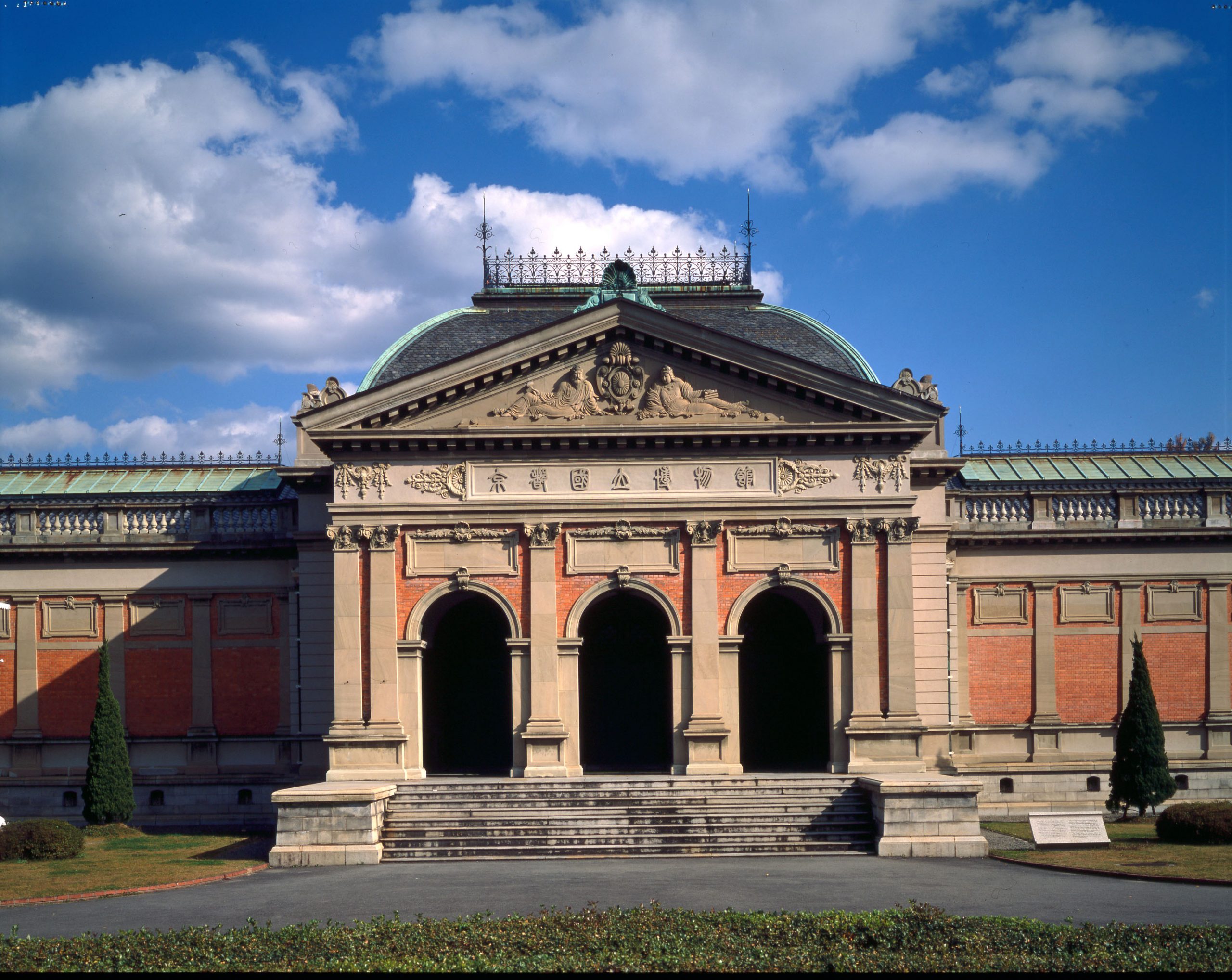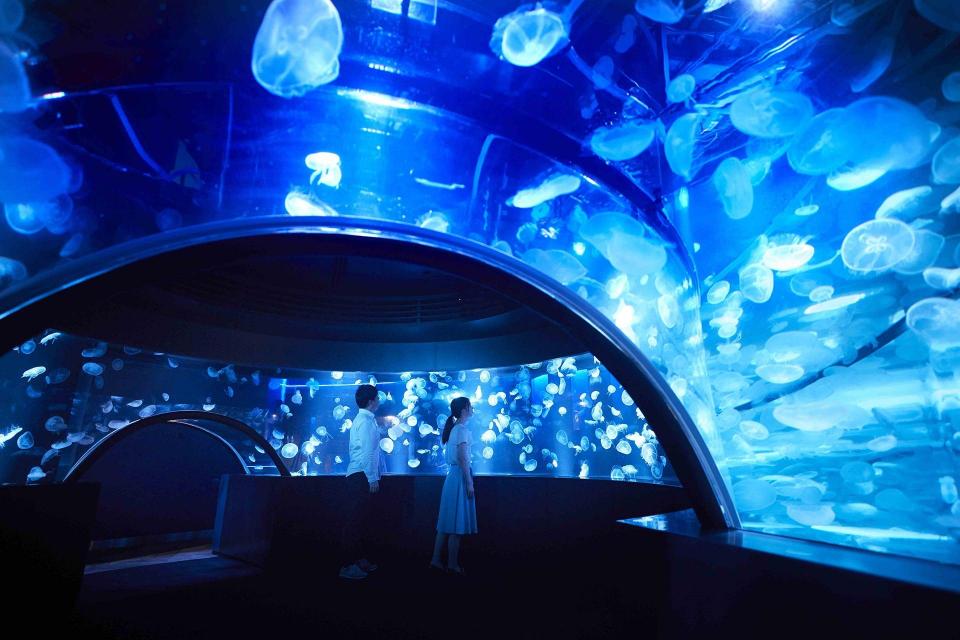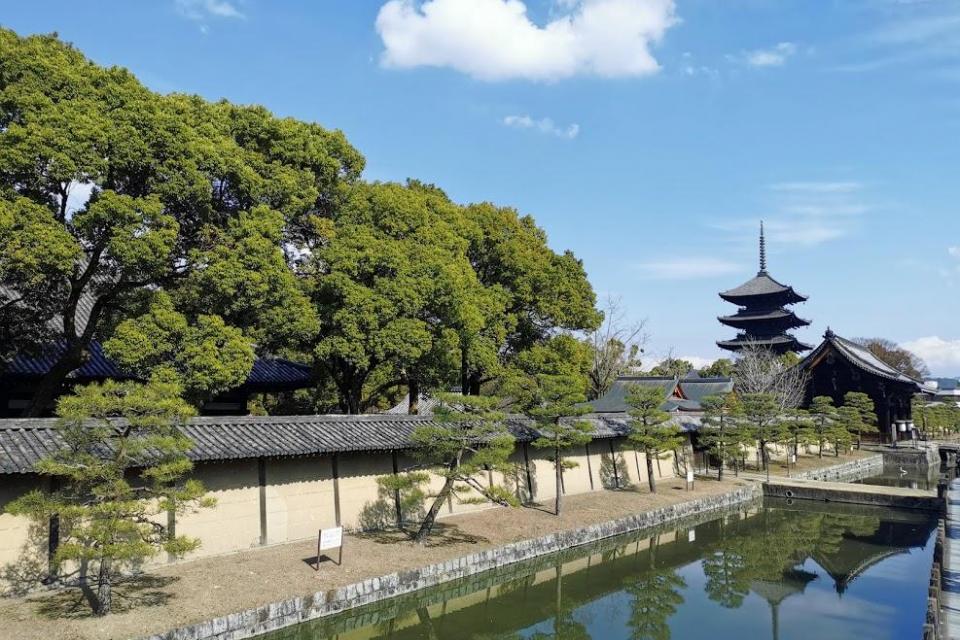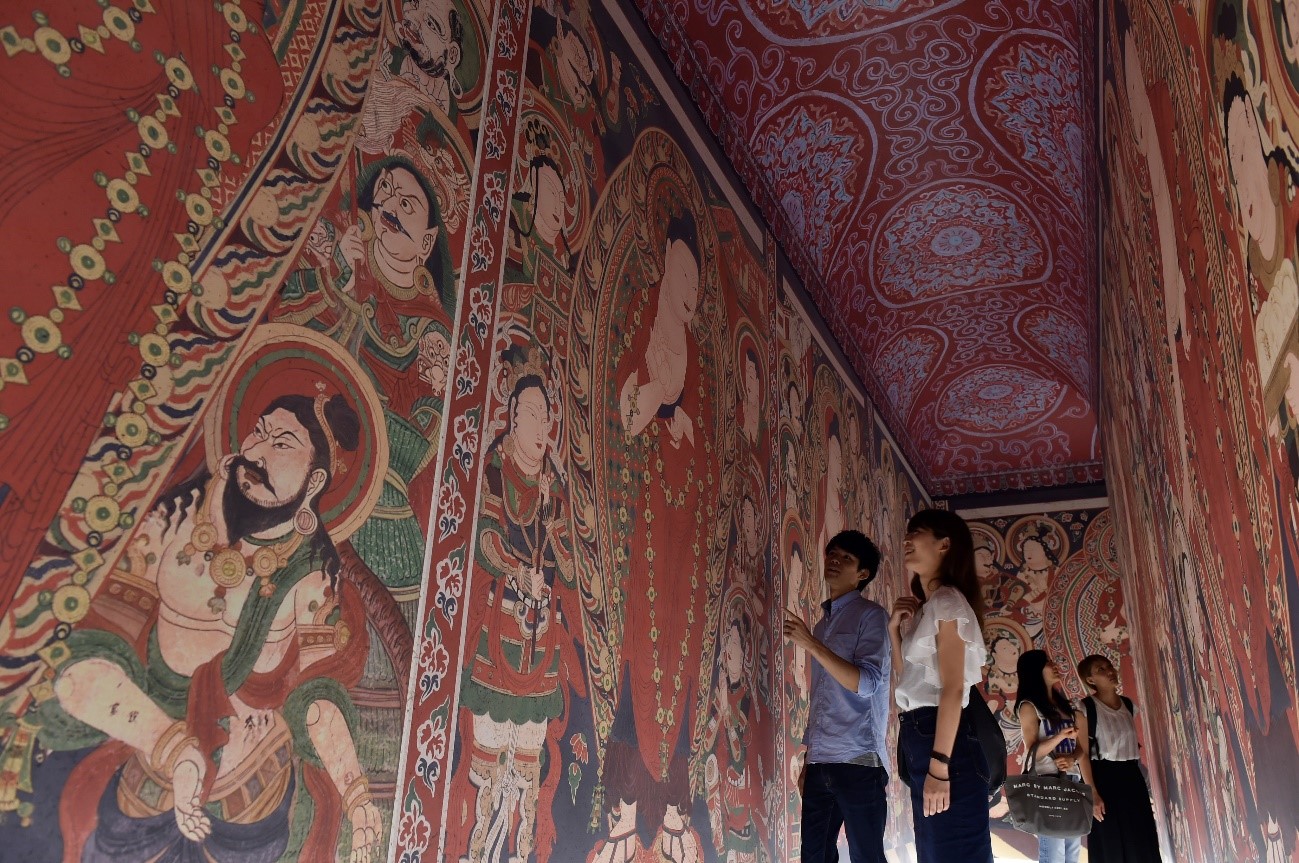
The temple name means literally “Hall with thirty three spaces between the columns”, describing the architecture of the 120-meter long (the world’s longest wooden building) main hall of the temple.
Sanjusangen-do Temple houses must be one of the most impressive assemblies of statues in the world as well. The main image is of a seated Kannon bodhisattva, a masterpiece attributed to the sculptor Tankei, and one that is deemed a national treasure in Japan. Kannon is the bodhisattva of compassion, and the statue’s peaceful, benevolent countenance conveys this state clearly and movingly.
The effect is multiplied by the thousand standing statues of Kannon which fill the rest of the hall. Like soldiers of compassion they stand, flanking the main image in fifty columns, each ten rows deep. Graceful statues carved out of cypress and covered with gold leaf, each has over twenty pairs of arms and is responsible for saving many worlds. One hundred and twenty-four of these statues, saved from the fire which claimed the original temple in 1249, date from the temple’s founding in 1164. The remaining statues date from the 13th century.
There are also 28 statues of guardian deities with intense expressions and impressive detail. Overall, Sanjusangen-do Temple is a place for one to marvel at the beauty of Japanese Buddhist sculpture and surrender to the compassionate gaze of all those pairs of eyes.
Basic Information
- Address : 657 Sanjusangenndo-mawari-machi, Higashiyama-ku, Kyoto
- Website : Click here (Japanese)
- Access : Comfortable access to Higashiyama (Sanjusangen-do)


